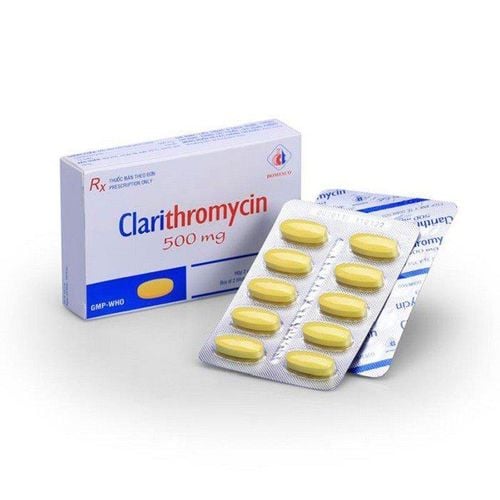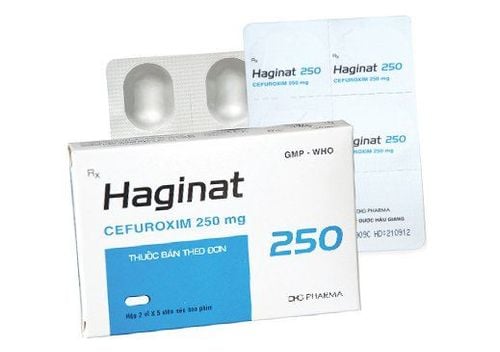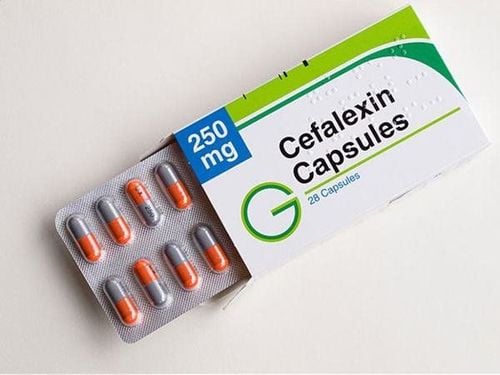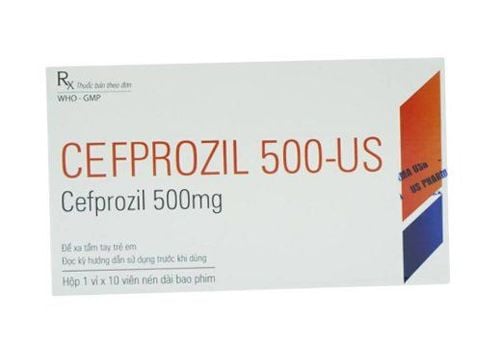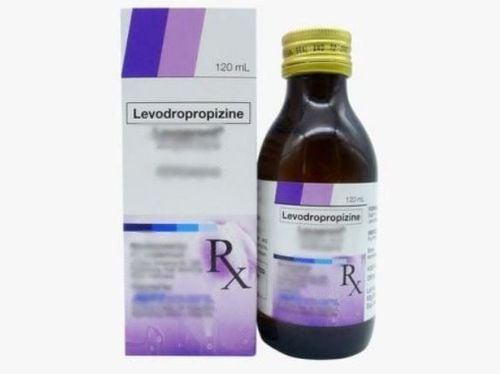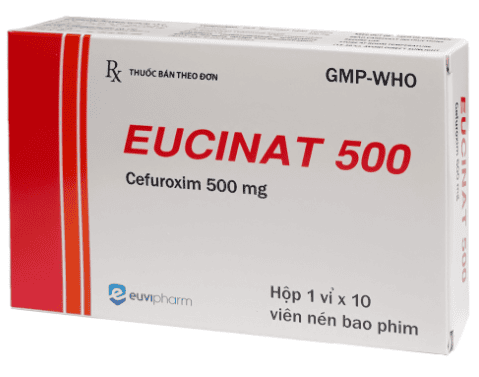This is an automatically translated article.
Ofmantine medicine 1g is often used in some infectious diseases. Ofmantine is prepared in the form of film-coated tablets with a drug strength of 1g.
1. What are the main ingredients of Ofmantine Domesco 1g?
The main ingredients in each Ofmantine Domesco film-coated tablet 1g include: Amoxicillin 875mg, Clavulanic Acid 125mg and a system of excipients including: Croscarmellose sodium, Crospovidone, Magnesium stearate, Colloidal silicon dioxide, Hydroxypropylmethyl cellulose 15cP, Polyethylene glycol 6000, Titanium dioxide.Amoxicillin and potassium clavulanate is a bactericidal combination. This combination does not change the mechanism of action of Amoxicillin but also helps synergistically kill bacteria, expanding the spectrum of Amoxicillin against many beta-lactamase producing bacteria.
2. Uses of the drug Ofmantine 1g
Ofmantine 1g is used to treat the following infections in a short time:
Severe infections in the upper respiratory tract: tonsillitis, sinusitis, otitis media; Lower respiratory tract infections caused by strains of H. influenzae and Moraxella Catarrhalis capable of producing beta-lactamase enzymes: Acute and chronic bronchitis, pneumonia - bronchiolitis; Genitourinary tract infections caused by strains of bacteria such as E. coli, Klebsiella and Enterobacter capable of producing sensitive beta-lactamase cause cystitis, urethritis, pyelonephritis (due to infection) female genital tract bacteria); Skin and soft tissue infections causing boils, abscesses, and wound infections; Bone and joint infections: osteomyelitis; Dental infection: alveolar abscess; Other infections in the following diseases: miscarriage - infected abortion, infections in obstetrics, infections in the abdomen. In the following cases, Ofmantine 1g is not allowed to be prescribed:
Allergy to beta-lactam antibiotics such as penicillins and other cephalosporins; Attention should be paid to the possibility of cross-allergenicity of Ofmantine 1g with beta-lactam antibiotics such as cephalosporin antibiotics; People with a history of jaundice, liver dysfunction caused by the use of antibiotics Amoxicillin and clavulanic acid or penicillin antibiotics because Clavulanic acid causes an increased risk of intrahepatic cholestasis;
3. Dosage of Ofmantine 1g
Dosage of the drug Ofmantine 1g: Severe infections and respiratory infections use 1 tablet every 12 hours; For the elderly: No dose adjustment of Ofmantine 1g is required unless creatinine clearance ≤ 30ml/min; Ofmantine 1g should not be used in children under 40 kg of body weight. Ofmantine medicine 1g is taken orally, swallow 1g Ofmantine tablet whole (can be broken in half) and do not chew the tablet.
4. Notes when using Ofmantine 1g
When using Ofmantine 1g with patients with liver dysfunction: Signs and symptoms of cholestatic jaundice are rare when taking Ofmantine 1g, but if they occur, they can progress to severe. However, these symptoms are usually reversible and completely resolved after 6 weeks of discontinuation of treatment; For patients with moderate or severe renal impairment, it is necessary to pay attention to the dose of Ofmantine 1g before use; For patients with a history of hypersensitivity to penicillins that can cause severe or fatal reactions when taking Ofmantine 1g; Patients taking Amoxicillin may experience redness with fever and lymphadenopathy; Prolonged use of Ofmantine 1g sometimes leads to the development of antibiotic-resistant bacteria; Must periodically check hematology index, liver function index, kidney function during treatment. Differential diagnoses should be performed to detect Clostridium difficile diarrhea and pseudomembranous colitis; Use of Ofmantine 1g is associated with a high risk of rash in patients with infectious mononucleosis;
5. Undesirable effects of the drug Ofmantine 1g
Common side effects of Ofmantine 1g: Diarrhea, nausea, vomiting, rash, itching; Uncommon side effects of Ofmantine 1g: Eosinophilia, hepatitis, cholestatic jaundice, liver enzyme elevations severe and lasting for several months, Candida vaginitis, headache, fever, fatigue; Rare side effects of Ofmantine 1g: Anaphylaxis, Quincke's edema, slight decrease in platelet count, leukopenia, hemolytic anemia, pseudomembranous colitis, Stevens - Johnson syndrome, erythema polymorphism, toxic epidermal necrolysis, interstitial nephritis, Inform the doctor of any other undesirable effects that patients experience when using Ofmantine 1g.
6. Interaction of Ofmantine 1g with other drugs
Be careful when using Ofmantine 1g for patients being treated with anticoagulants because Ofmantine 1g can cause prolonged bleeding and clotting time; Similar to other broad-spectrum antibiotics, Ofmantine may reduce the effectiveness of oral contraceptives. Therefore, Ofmantine 1g should be avoided in combination with these drugs; Nifedipine increases the absorption of the antibiotic Amoxicillin; Patients with hyperuricemia when taking Allopurinol with the antibiotic Amoxicillin will increase the likelihood of Amoxicillin rash; There may be antagonism between Amoxicillin and bacteriostatic agents such as fusidic acid, Chloramphenicol antibiotic, Tetracycline antibiotic; The antibiotic Amoxicillin reduces the excretion of Methotrexate, increases toxicity on the gastrointestinal tract and hematopoietic system; Probenecid when taken immediately before or simultaneously with antibiotic Amoxicillin will reduce Amoxicillin elimination, thereby increasing the concentration of Amoxicillin in the blood of the patient, however, Probenecid does not affect the half-life, the maximum drug concentration in the blood. blood (Cmax) and area under the curve of active ingredient Clavulanic Acid; Ofmantine medicine 1g does not affect when driving and using machines and equipment; Experimental studies in rats have demonstrated that using Ofmantine 1g does not cause malformations in the pregnancy of rats. However, because there is little experience in using Ofmantine 1g for pregnant women, it is necessary to avoid using Ofmantine in pregnant patients, especially in the first 3 months, unless it is necessary and mandatory to use by the doctor. prescription drugs; During breastfeeding, mothers can completely take Ofmantine 1g. Ofmantine 1g is not harmful to a nursing baby, but there is still a small risk of sensitization because a very small amount of the drug passes into the milk.
7. Overdose of the drug Ofmantine 1g
Symptoms of overdose Ofmantine 1g include abdominal pain, vomiting and diarrhea. A small number of patients who overdosed Ofmantine 1g also had a rash, increased agitation or drowsiness. At that time, it is necessary to stop taking Ofmantine 1g immediately. If an overdose of 1g Ofmantine occurs early and there are no contraindications, emesis or gastric lavage can be used. Overdose of 1g less than 250 mg/kg Ofmantine causes no special symptoms and does not require gastric lavage. Interstitial nephritis resulting in oliguria renal failure has occurred in a small number of patients with amoxicillin overdose; Crystalline urine in some patients leading to renal failure has been reported after overdose of Amoxicillin in adults and children, it is necessary to provide adequate water and electrolytes to the body to maintain diuresis and reduce risk of crystalluria when taking Ofmantine 1g ; Symptoms of kidney damage usually resolve spontaneously after discontinuation of Ofmantine 1g; Hypertension may occur in patients with compromised renal function due to decreased elimination of Amoxicillin and Clavulanic Acid; Hemodialysis can be used to remove both amoxicillin and clavulanic acid from the circulation of patients with 1 g overdose of Ofmantine.
Please dial HOTLINE for more information or register for an appointment HERE. Download MyVinmec app to make appointments faster and to manage your bookings easily.




